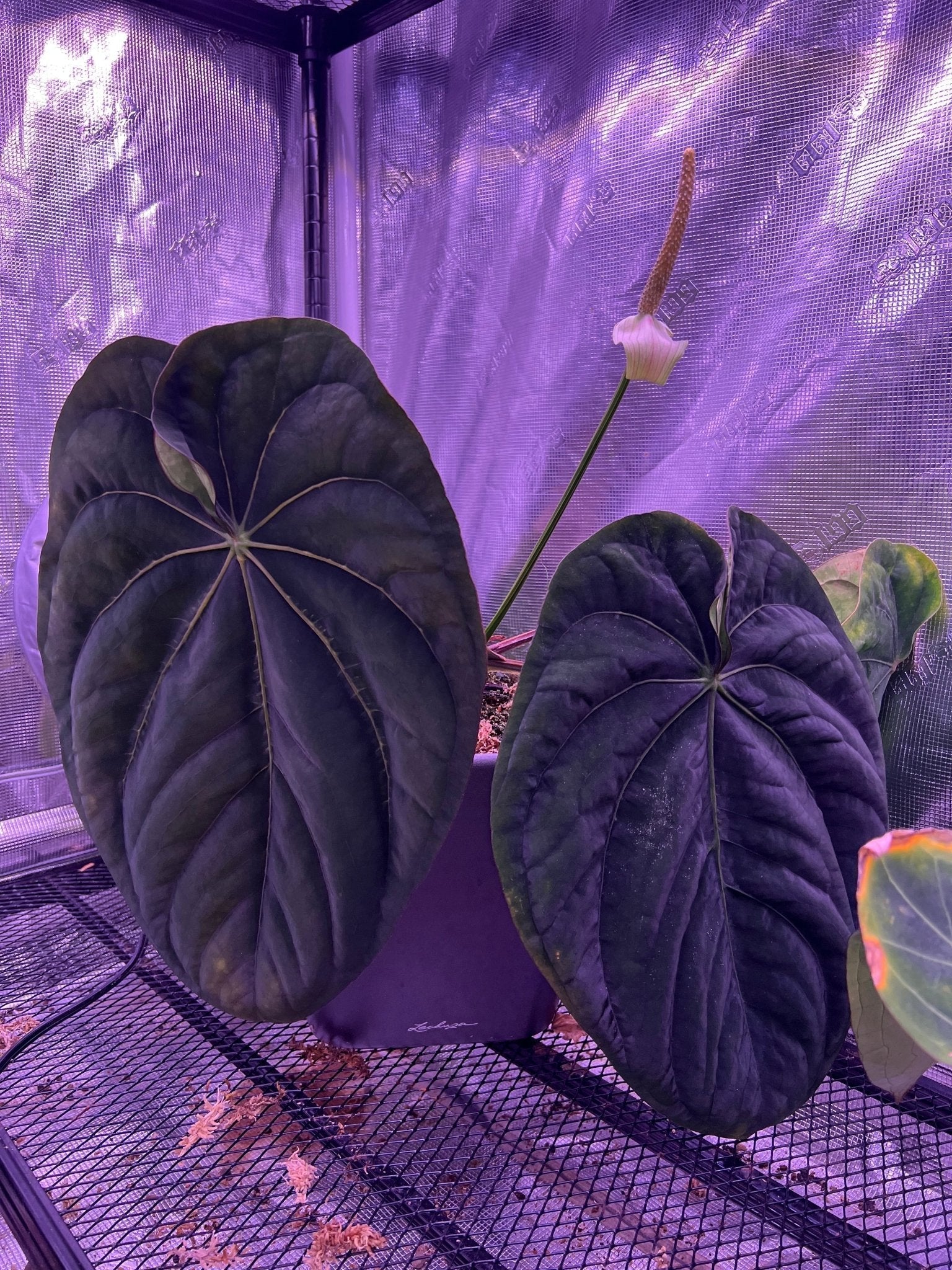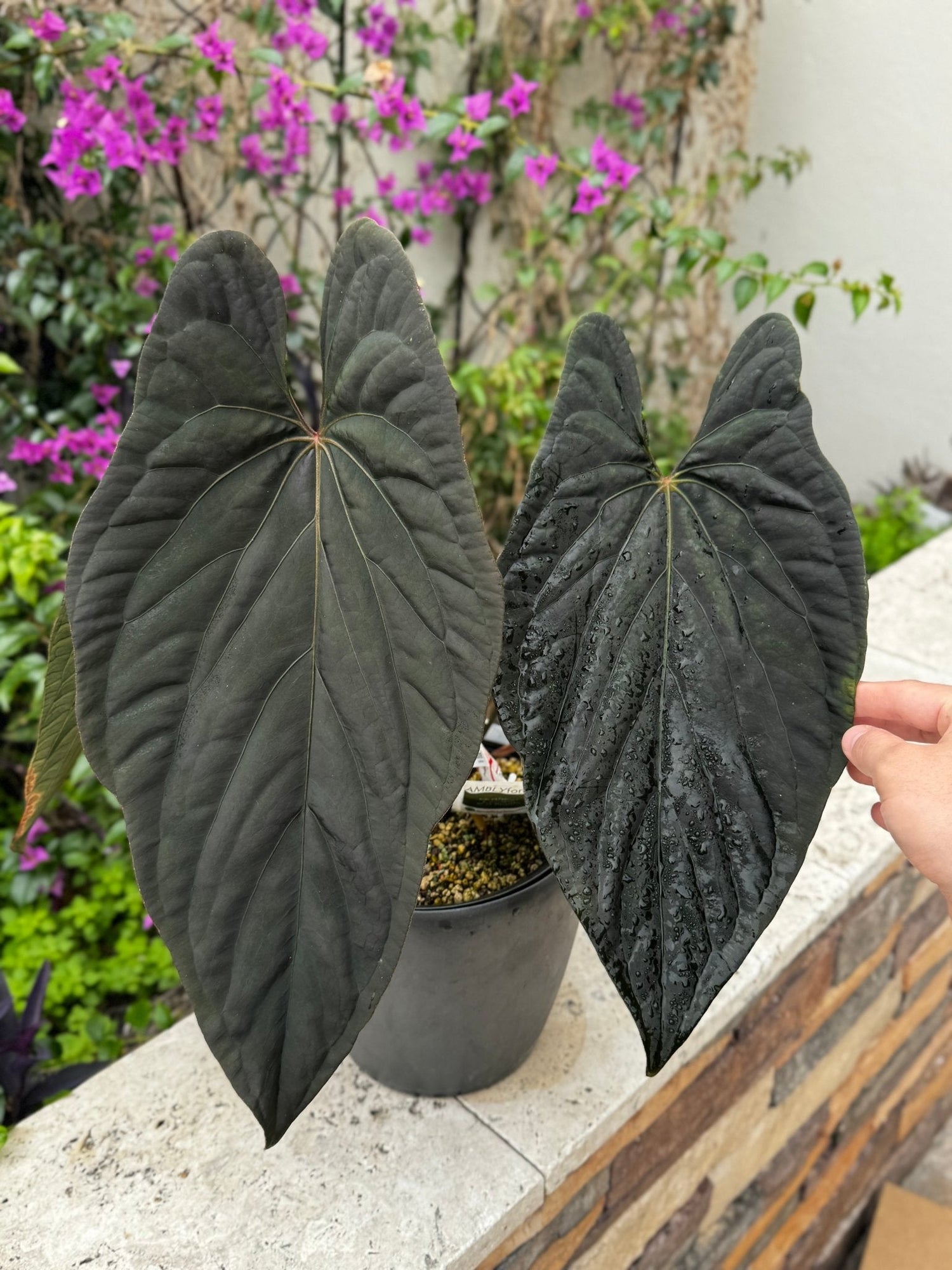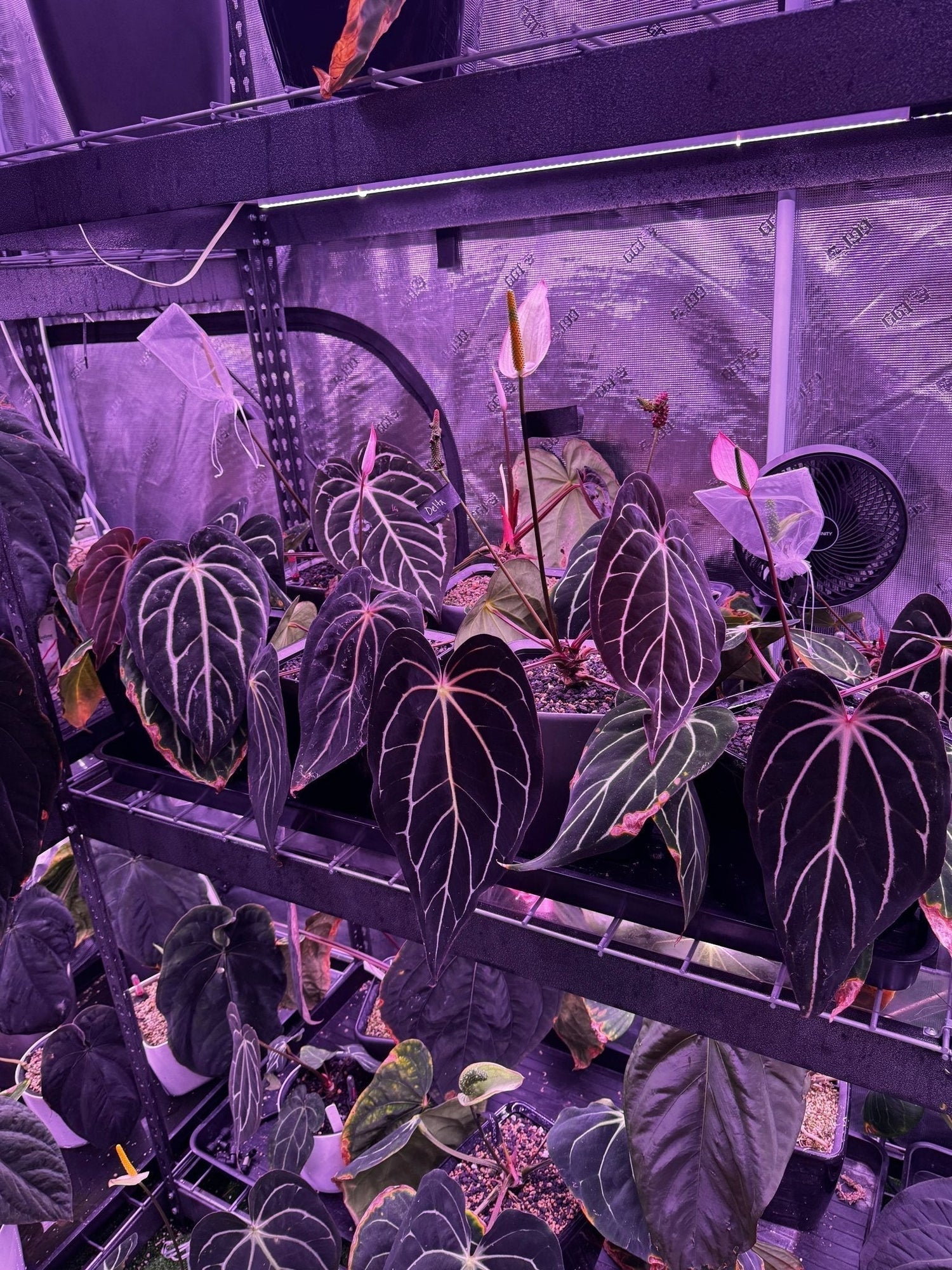Anthurium dressleri
About
Anthurium dressleri is an understory velvet anthurium from Panama. It has a compact growth habit with dark thick leaves with muted veins and ribbed/winged petioles.
I will go over some of the “types” of dressleri here, but I’m using this term loosely as some of these will be locales or ecotypes while others will be notable plants from certain nurseries or individuals.
The most famous dressleri are of the Rio Guanche ecotype, the location of the original type description population. These were made famous in the hobby by Jay Vannini with his selected F1 and F2 dark clones which were cherry picked from seedling batches and subsequently propagated. The best examples possess very dark purple to black emergent colors and very dark nearly black hardened leaves.
“Windy” dressleri is the nickname given to all of the plants originating from Hawaiian grower Windy Aubrey. The original source of this plant is of some debate and I don’t have any definitive information. These plants are all selfings of her mother plant from a single batch as far as I know. Many of these have very nice dark emergent colors that rival some of the RG plants
The SKG dressleri clone is reportedly from Colon, Panama. This clone seems to have a bit of a more brown colored emergent than the RG plants.
“Eastern” dressleri is another “type” that is being sold on which there isn’t much information readily available but it may be an ecotype or potentially a different species. These are reportedly slightly easier to grow.
Growing conditions
Like most velvet anthuriums, dressleri enjoys consistent moisture and humidity. I grow my more mature plants in pon in self watering pots and my seedlings semi hydroponically in pure tree fern fiber just as I do for all of my other plants, but they should do well in any suitable medium you’re comfortable with given consistent conditions. I also use the same fertilization regimen for dressleri as I do for my other anthuriums.
Where dressleri differs in its care from some other velvet anthuriums is in its sensitivity to high light levels. I grow my dressleri along with kunayalense on low light shelves where I try to keep the levels at or below 200 fc for optimal growth and appearance. They also seem to appreciate cooler temperatures to achieve their deepest emergent coloration and darkest hardened leaf color. My tents reach around the low 80’s during the day and low 70s to high 60’s at night.
Hybridization/Breeding
In this section I will go over what I feel to be the most important traits of the species for hybridization. Some things are objective ie dark leaf color, while other traits like emergent color can be subjective. Much of what is contained in this section is my personal opinion.
Why dressleri
Dressleri has a number of traits that make it ideal for use in hybridization. The dark velvety leaves and deep purple emergent coloration possessed by the best individuals seem to be passed along fairly consistently to its hybrids. The compact growth habit of dressleri and its hybrids is also of particular utility for home growers with limited grow space in tents and cabinets (like myself) and can be used to tame the petiole length of some leggier species. This is one reason why I’ve focused much of my breeding efforts around compact plants such as dressleri, carlablackiae and BVEP.
What I’m selecting for
Dressleri can have some variability in emergent coloration ranging from a kind of rusty orange/brown color (which for me is undesirable), to a super deep reddish purple or even almost black. The best ones to me possess this deep purple/black emergent color which is indicative of high levels of pigment. The RG dressleri clones that I’ve grown all seem to possess this trait as do some of the dressleri selfs originating from Windy Aubrey’s clone.
Like any anthurium there can be a range of different leaf morphologies, rounder vs narrower, closed vs open sinus, bullate vs smooth. In general with my breeding I am selecting for a rounder shape, quilted/pillowy texture and closed sinus with overlapping/forward turned or “kissing” basal lobes which to me is the classical dressleri look that we all love.




